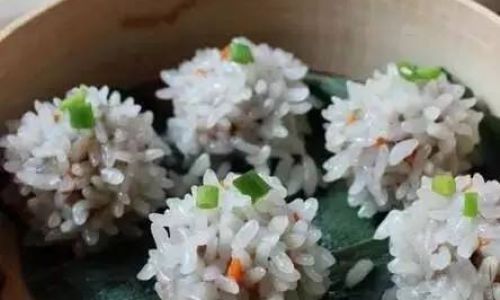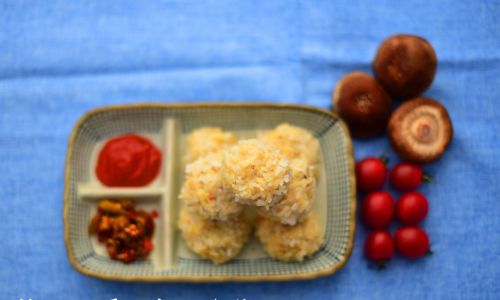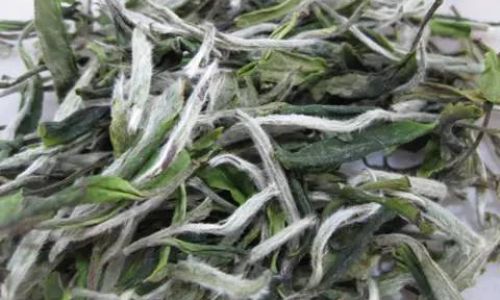Introduction
The art of making zongzi, a traditional Chinese rice dumpling wrapped in bamboo leaves, is a cherished culinary tradition, especially during the Dragon Boat Festival. However, one common challenge many households face is how to handle the leftover glutinous rice after wrapping these delicious treats. Wasting food is never ideal, and glutinous rice, with its sticky texture and unique properties, requires specific care to maintain its quality. This article explores actionable, science-backed methods to preserve leftover glutinous rice, ensuring it remains fresh, safe, and versatile for future meals. From short-term refrigeration to long-term freezing, and even creative repurposing, these techniques will help you minimize waste and maximize flavor.

Understanding Glutinous Rice: Composition and Challenges
Glutinous rice, also known as sticky rice or sweet rice, differs from regular long-grain rice due to its high amylopectin content. This starch gives it its signature stickiness, which is why it’s ideal for dishes like zongzi, sushi, and desserts. However, this same stickiness poses challenges during storage. When exposed to moisture or air, glutinous rice can clump, harden, or develop off-flavors. Additionally, its low amylose content means it absorbs liquids more readily, making it prone to spoilage if not stored correctly.
Immediate Post-Preparation Steps
Before diving into storage methods, it’s crucial to handle leftover rice properly immediately after wrapping zongzi.
- Cool Down Rapidly: Hot rice left at room temperature for too long becomes a breeding ground for bacteria. Spread the rice in a thin layer on a baking sheet or tray to accelerate cooling. Avoid stacking bowls of hot rice, as this traps heat and moisture.
- Avoid Cross-Contamination: Use clean utensils and containers to prevent introducing bacteria. If the rice was in contact with raw ingredients (e.g., meat fillings used in zongzi), ensure thorough cleaning of surfaces and tools.
Short-Term Storage: Refrigeration
Refrigeration is suitable for rice you plan to use within 3–5 days.

- Airtight Containers: Transfer cooled rice to airtight, moisture-resistant containers. Glass or BPA-free plastic containers with tight-fitting lids work best. Avoid metal containers, as they may react with the rice’s starches over time.
- Portion Control: Divide the rice into meal-sized portions. This reduces exposure to air and moisture each time you open the container.
- Temperature Check: Ensure your refrigerator is set below 40°F (4°C). Warmer temperatures accelerate bacterial growth.
- Shelf Life: Refrigerated glutinous rice will last 3–5 days. Beyond this, its texture may become gummy, and flavor degradation occurs.
Long-Term Storage: Freezing
Freezing is the gold standard for preserving glutinous rice for 1–6 months.
- Pre-Freezing Prep:
- Dry Pack: For rice intended for frying or stir-fries later, spread it on a baking sheet and freeze uncovered for 1–2 hours. Once partially frozen, transfer to freezer bags. This prevents clumping.
- Wet Pack: For rice to be reheated as-is (e.g., for congee or desserts), mix it with a teaspoon of neutral oil (like vegetable oil) per cup of rice to retain moisture.
- Packaging:
- Use heavy-duty freezer bags or vacuum-sealed containers. Remove as much air as possible to prevent freezer burn.
- Label bags with the date and contents.
- Thawing:
- Refrigerator Thawing: Safest method; transfer frozen rice to the fridge 24 hours before use.
- Cold Water Bath: Submerge sealed bags in cold water for faster thawing (1–2 hours).
- Microwave Thawing: Use the defrost setting in short bursts, stirring occasionally.
- Reheating:
- Stovetop: Add a splash of water and reheat over low heat, stirring gently.
- Microwave: Use a damp paper towel to cover the rice to retain moisture.
Dry Storage: Dehydration Techniques
Dehydrating glutinous rice extends its shelf life to over a year, though the texture will change significantly.
- Sun-Drying (Ideal for Dry Climates):
- Spread rice in a single layer on a clean cloth or tray.
- Cover with cheesecloth to protect from insects.
- Stir occasionally until completely brittle (2–3 days).
- Oven Drying:
- Preheat oven to 140°F (60°C).
- Spread rice on a baking sheet and bake for 4–6 hours, stirring every hour.
- Food Dehydrator:
Set to 135°F (57°C) and dry for 6–8 hours.

- Storage: Store dried rice in airtight jars in a cool, dark pantry. Rehydrate by soaking in hot water or broth before use.
Creative Repurposing: Turning Leftovers into New Dishes
Preservation isn’t just about storage—it’s also about innovation. Here’s how to transform leftover glutinous rice into exciting meals:
- Sweet and Savory Pancakes:
- Mix rice with beaten eggs, chopped vegetables (e.g., scallions, carrots), and a pinch of salt.
- Fry spoonfuls in oil until crispy. Serve with soy sauce or sweet chili dip.
- Rice Balls (Onigiri-Inspired):
- Wet hands to prevent sticking, then mold rice around fillings like smoked salmon, avocado, or pickled plum.
- Wrap in nori seaweed for a portable snack.
- Stuffed Peppers or Tomatoes:
- Hollow out bell peppers or tomatoes and stuff with a mix of rice, ground meat, and herbs.
- Bake until tender.
- Rice Pudding:
- Simmer rice with milk, sugar, and vanilla until thickened.
- Serve warm or chilled with fruit compote.
- Fried Rice:
Sauté rice with garlic, peas, eggs, and soy sauce for a quick meal.
Avoiding Common Mistakes
- Never Refreeze Thawed Rice: Once thawed, glutinous rice should not be refrozen, as this degrades texture and safety.
- Skip the Slow Cooker for Reheating: Slow cookers create moisture-rich environments that can make rice soggy.
- Avoid Aluminum Containers: Acidic ingredients (like vinegar in some recipes) can react with aluminum, causing off-flavors.
Food Safety: When to Discard
Even with proper storage, glutinous rice has limits. Discard if you notice:

- Foul odors (sour, musty, or chemical smells).
- Slimy texture or unusual discoloration.
- Mold growth (even if only visible in spots).
Eco-Friendly and Budget-Friendly Tips
- Reusable Containers: Invest in silicone lids or beeswax wraps to reduce plastic waste.
- Composting: If rice does spoil, add it to a compost bin instead of the trash.
- Batch Cooking: Next time, estimate rice needs more precisely to minimize leftovers.
Conclusion
Leftover glutinous rice from zongzi making is a treasure, not a burden. By understanding its unique properties and employing smart storage techniques—from refrigeration to freezing to dehydration—you can ensure every grain is used thoughtfully. Pair these methods with creative recipes, and your post-festival rice will become the star of new culinary adventures. Remember, food preservation is both a science and an art, and with a little care, you can honor tradition while embracing sustainability.
Final Word: Whether you’re a seasoned chef or a home cook, these strategies empower you to reduce waste, save money, and savor the flavors of glutinous rice long after the zongzi are gone. Experiment, adapt, and enjoy the journey of turning leftovers into delicious possibilities!






0 comments